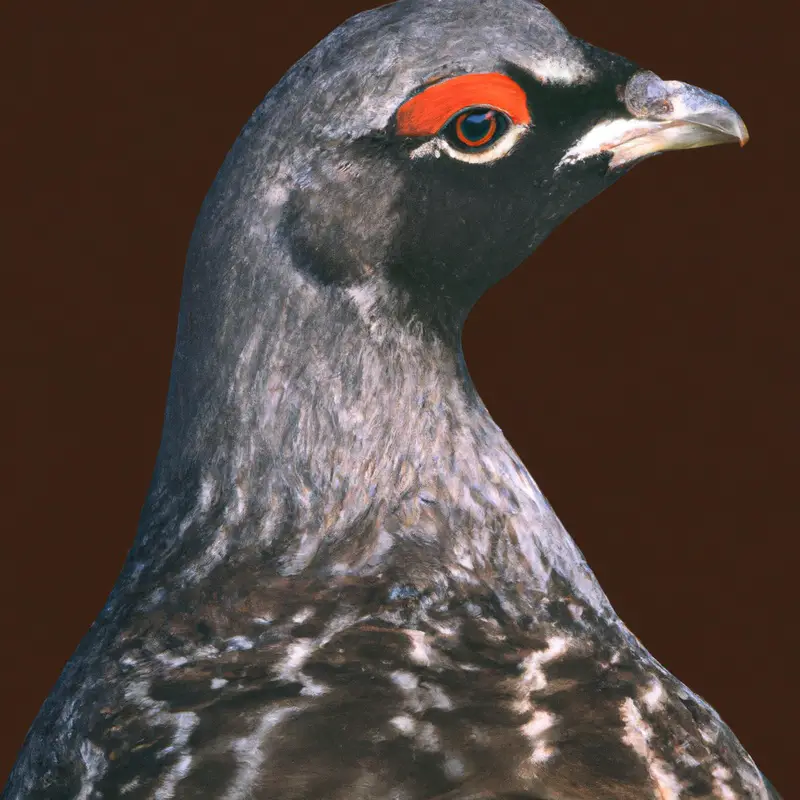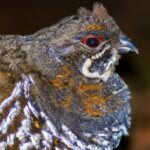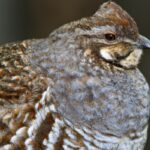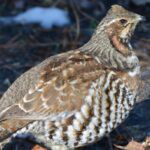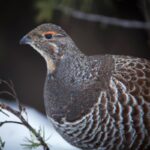Key Takeaways:
- Ruffed grouse are a popular game bird in Alaska for hunting enthusiasts.
- Hunting opportunities for ruffed grouse in Alaska are diverse and plentiful.
- Hunters must possess the appropriate licenses and follow regulations to hunt ruffed grouse in Alaska.
- Successful hunting of ruffed grouse in Alaska requires knowledge of their habits and preferred habitats.
Have you ever dreamed of embarking on an epic hunting adventure in the wilds of Alaska? Well, I’ve got an exhilarating opportunity for you – hunting ruffed grouse in the Last Frontier.
As an avid hunter and wilderness enthusiast, I can’t help but get excited about the thrill of pursuing these elusive birds in one of the most breathtaking landscapes on Earth.
In this article, I’ll share everything you need to know about hunting seasons, regulations, gear, techniques, and even how to cook up a delicious meal with your harvest. So, grab your gear and let’s explore the untamed beauty of Alaska while hunting ruffed grouse!
Aspect | Description |
Ruffed Grouse | A type of game bird found in Alaska, known for its distinctive ruffed neck feathers. |
Hunting Season | September 1 – March 31 |
Bag Limit | 4 grouse per day, 8 in possession |
Hunting Method | Mostly done by walking through wooded areas and flushing grouse from their hiding spots. |
Equipment | Shotgun, bird dog, blaze orange clothing, hunting license, and upland game bird stamp. |
Habitat | Ruffed grouse prefer mixed forests with dense understory and young trees. |
Preparation | Learn grouse behavior, practice shooting, and familiarize oneself with local hunting regulations. |
Pros | Fresh air and exercise, challenging hunting experience, delicious game meat. |
Cons | Variable grouse population, unpredictable weather conditions, physically demanding. |
Cooking | Grouse can be cooked in various ways, such as roasting, grilling, or pan-frying. |
Regulations | Check Alaska Department of Fish and Game for specific hunting regulations and licenses. |
Hunting Seasons and Regulations in Alaska
Overview of Hunting Seasons
Hunting seasons vary by location and species, including factors like population size and conservation efforts. It’s important to familiarize yourself with the specific regulations in your area.
When planning your hunting season, consider the following:
- Dates: Hunting seasons are typically set for specific time periods to ensure sustainable populations and protect breeding seasons.
- Bag limits: Each species will have its own bag limit, which is the maximum number you’re allowed to harvest in a season.
- Licensing requirements: Make sure you have the appropriate hunting license and any required tags or permits.
- Special regulations: Some areas may have additional restrictions, such as weapon restrictions or specific hunting methods allowed.
- Conservation efforts: Hunting seasons are designed to balance conservation and hunting opportunities, so it’s vital to respect regulations and support conservation efforts.
By staying informed and abiding by hunting regulations, we can ensure a sustainable and responsible hunting season for all. Happy hunting!
Licensing and Permits
To legally hunt ruffed grouse in Alaska, you must obtain the necessary licenses and permits.
The two most important documents you’ll need are an Alaska hunting license and a small game hunting license.
These licenses allow you to hunt ruffed grouse, along with other small game species.
Additionally, it’s essential to familiarize yourself with the specific hunting regulations for ruffed grouse, such as bag limits and season dates.
Remember to always carry your licenses and permits with you while hunting.
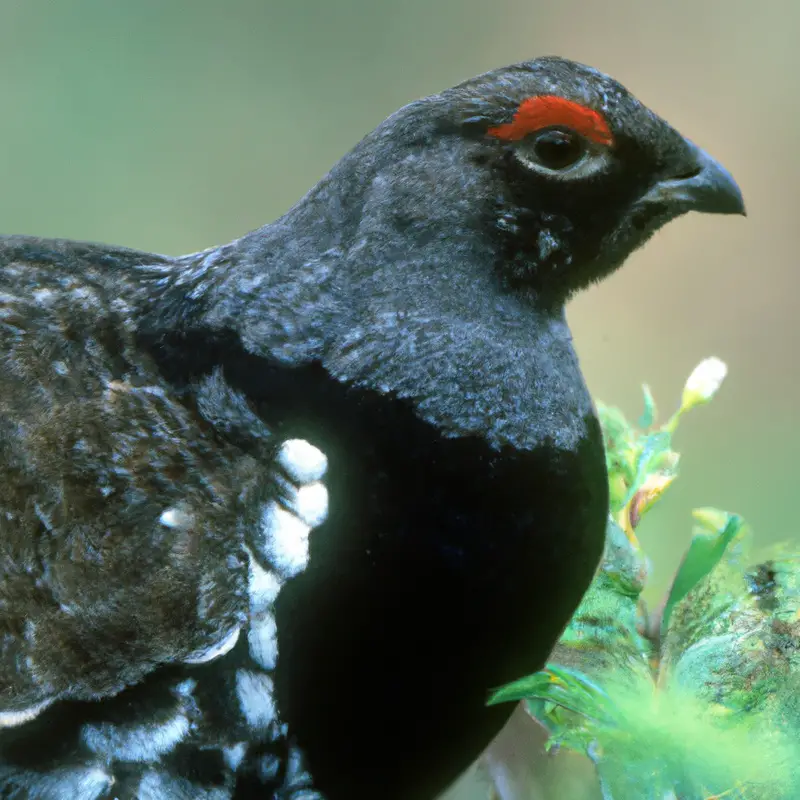
Firearm Regulations
Firearm regulations in Alaska are strict and should be adhered to by hunters. Here are some key points to remember:
- Possessing a valid hunting license is necessary to hunt with a firearm in Alaska.
- It is essential to follow the specific hunting seasons for each species, including ruffed grouse, as well as any related bag limits.
- Shotguns or rifles can be used for hunting ruffed grouse. Ensure compliance with specific firearm type and gauge restrictions.
- Familiarize yourself with the minimum barrel length requirements for firearms used in hunting.
- It is crucial to transport firearms correctly, following all regulations regarding storage and transportation, particularly when travelling by aircraft.
- Always respect designated hunting areas and obtain permission before hunting on private land.
By keeping these firearm regulations in mind, you can ensure a safe and enjoyable hunting experience in Alaska.
Best Times and Locations for Ruffed Grouse Hunting in Alaska
Prime Hunting Times
The prime hunting times for ruffed grouse in Alaska vary depending on the season. Generally, early morning and late afternoon are the best times to increase your chances of spotting these elusive birds.
During the fall, when the leaves are changing colors and the temperatures are cooler, ruffed grouse are more active and visible.
It’s also important to note that hunting is typically not allowed during the breeding season to protect the population. Additionally, certain areas of Alaska, such as the Interior and Southeast regions, have higher populations of ruffed grouse, making them ideal locations for hunting.
Popular Hunting Locations
Popular hunting locations for ruffed grouse in Alaska are the Yukon Flats National Wildlife Refuge, Chugach National Forest, and the Kenai National Wildlife Refuge.
These areas provide abundant habitats for ruffed grouse and offer plenty of opportunities for successful hunts.
Additionally, the sprawling forests and diverse terrain make for an exciting and challenging hunting experience.
Make sure to check the hunting regulations and obtain any necessary permits before heading out to these popular locations.
Happy hunting!

Essential Gear and Equipment for Ruffed Grouse Hunting
Firearm Recommendations
Sure, here’s the content focusing solely on the heading “Firearm Recommendations”: For hunting ruffed grouse, it’s important to choose a firearm that is lightweight and maneuverable.
A 20-gauge or 12-gauge shotgun is commonly used, with a shorter barrel for quick handling in dense cover.
Opt for an open choke to increase your chances of hitting fast-moving birds.
Consider selecting a shotgun that is reliable, easy to clean, and has a comfortable fit for you.
Additionally, using shot sizes ranging from 6 to 8 will provide the best results when hunting ruffed grouse.
Remember to practice proper firearm safety and always follow hunting regulations.
Clothing and Footwear
Choosing the right clothing and footwear is essential for a successful ruffed grouse hunting experience.
Here are a few tips to keep in mind:
- Dress in layers: The weather in Alaska can be unpredictable, so it’s important to be prepared for varying temperatures. Layer your clothing, starting with a moisture-wicking base layer, followed by a insulating mid-layer, and top it off with a waterproof and breathable outer shell.
- Opt for camouflage: Ruffed grouse have keen eyesight, so blending in with your surroundings is crucial. Choose camouflage patterns that match the forested environment of Alaska.
- Wear comfortable and durable footwear: You’ll be spending a lot of time on your feet, so make sure to invest in a good pair of hunting boots that offer support, traction, and protection from wet and rugged terrain.
- Don’t forget accessories: Bring a hat, gloves, and a face mask to further conceal yourself and protect against the elements. Additionally, consider wearing orange clothing to maintain visibility to other hunters.
Remember, being comfortable, well-camouflaged, and prepared for the weather will greatly increase your chances of a successful ruffed grouse hunt in Alaska.

Hunting Accessories
When you’re going hunting for ruffed grouse, there are a few essential accessories that can make your experience more successful and enjoyable.
Some important hunting accessories include a shotgun with the appropriate ammunition, a reliable hunting knife, durable hunting boots for traversing rugged terrain, and a camouflage outfit to blend in with your surroundings.
Additionally, a game bag or vest is useful for carrying your gear and any harvested grouse.
Don’t forget your hunting licenses and permits, as well as a good pair of binoculars to spot grouse in the distance.
Hunting Techniques and Strategies
Flushing Techniques
Flushing techniques are key when hunting ruffed grouse in Alaska.
One effective method is to walk slowly through thick vegetation and make intermittent noise by snapping twigs or clapping hands.
This simulates the natural movement and sound of predators, causing the grouse to flush out of cover and into the open.
Another technique is to use a well-trained bird dog that can locate and flush the grouse for you.
It’s important to stay alert and ready for the sudden burst of action when the grouse take flight.
Shotgun Approach
Shotgun approach is a hunting technique that involves covering a wide area in search of ruffed grouse.
Instead of focusing on specific locations, you move around and explore multiple areas.
This approach allows you to increase your chances of finding grouse as it covers more ground.
It also provides an opportunity to explore different habitats and find those areas that are most populated with grouse.
When using the shotgun approach, it’s essential to remain attentive and listen for the distinctive drumming sound of grouse, indicating their presence nearby.
Calling Methods
Calling methods are an essential part of hunting ruffed grouse. One effective method is using a locator call, such as a crow or owl call, to provoke a response from the grouse.
Once a grouse responds, mimic their calls using a diaphragm or box call.
It’s important to be patient and wait for a response before calling again. Another technique is called “flushing,” where you quietly approach an area and then startle the grouse into flying, giving you a shot opportunity.
Whichever method you choose, be sure to practice and perfect your calling skills for a successful hunt.
Preparing and Cooking Ruffed Grouse
Field Dressing and Cleaning
Field dressing and cleaning a ruffed grouse is an important step after a successful hunt. Start by plucking the feathers and removing the head, wings, and feet.
Slit the belly open and remove the organs, being careful not to puncture the intestines.
Rinse the bird with cold water and pat it dry. Finally, store the cleaned grouse in a cool place or place it in a refrigerator to age for a few days before cooking.
Remember to always handle and clean the bird with clean hands and utensils to maintain food safety.
Cooking Tips and Recipes
Cooking Tips:
- Start by removing the feathers and gutting the bird properly.
- Rinse the grouse under cold water and pat dry with paper towels.
- Marinate the grouse for at least an hour to enhance flavor and tenderness.
- Season the bird with herbs, spices, and a touch of salt and pepper.
- Sear the grouse in a hot skillet for a few minutes on each side.
- Finish cooking in the oven until the internal temperature reaches 165°F (74°C.
Recipes:
- Classic Roasted Grouse: Rub the bird with olive oil, garlic, thyme, and rosemary. Roast at 425°F (220°C for about 20 minutes.
- Grouse Stir-Fry: Cut the grouse into bite-sized pieces and stir-fry with vegetables, soy sauce, and ginger.
- Grouse Tacos: Shred cooked grouse meat and serve in warmed tortillas with avocado, salsa, and lime juice.
- Grouse Pâté: Blend cooked grouse meat with butter, garlic, and herbs. Spread on crusty bread or crackers for a delicious appetizer.
Enjoy your ruffed grouse dishes!
Safety Tips and Considerations
Wilderness Preparedness
Wilderness Preparedness is essential when venturing into the outdoors.
Here are a few key tips to keep in mind:
- Plan ahead: Research the area you’ll be visiting and familiarize yourself with potential hazards, weather conditions, and wildlife.
- Pack essential items: Bring a map, compass, first aid kit, extra food and water, as well as appropriate clothing and gear. Don’t forget a reliable means of communication too.
- Tell someone your plans: Inform a trusted person of your itinerary and expected return time. This way, if something goes wrong, help can be called.
- Stay aware: Pay attention to changes in weather, signs of wildlife, and any potential dangers. Trust your instincts and be cautious.
- Leave no trace: Practice responsible wilderness ethics by packing out what you pack in and leaving nature as you found it.
By staying prepared and being mindful of your surroundings, you can ensure a safer and more enjoyable wilderness experience.
Hunting Safety Guidelines
Hunting Safety Guidelines:
- Always treat firearms as if they are loaded, and never point them at anything you do not intend to shoot.
- Before hunting, ensure you are familiar with the area and have proper permits or licenses.
- Wear brightly colored clothing to make yourself visible to other hunters.
- Keep your finger off the trigger until you are ready to shoot.
- Be aware of your surroundings and the location of other hunters.
- Avoid alcohol or drugs while hunting, as they impair judgment and coordination.
- Carry a first aid kit and know basic first aid techniques.
- Let someone know where you will be hunting and when you plan to return.
- Be aware of weather conditions and dress appropriately.
- Practice shooting skills and know the effective range of your firearm.
Frequently Asked Questions (FAQs)
Can non-residents hunt Ruffed Grouse in Alaska?
Yes, non-residents can hunt Ruffed Grouse in Alaska. Ruffed Grouse is classified as a small game species, and the Alaska Department of Fish and Game allows non-residents to hunt this bird.
However, it’s important to note that non-residents must obtain a hunting license and follow the rules and regulations set by the department.
These may include specific bag limits and hunting seasons. So, if you’re a non-resident and interested in hunting Ruffed Grouse in Alaska, make sure to check the current regulations and obtain the necessary licenses before heading out.
Are there any bag limits?
Sure, here’s the content you requested: Yes, there are bag limits when hunting ruffed grouse in Alaska.
The exact bag limits may vary depending on the hunting zone and the specific regulations set by the Alaska Department of Fish and Game.
It is important to check the current regulations before you go hunting to ensure you are aware of the bag limits in your specific area.
It is also crucial to comply with these bag limits to promote conservation and sustainable hunting practices.
Can I hunt ruffed grouse with a bow?
Yes, you can hunt ruffed grouse with a bow.
Using a bow for grouse hunting can offer a thrilling and challenging experience.
However, it’s important to comply with all local hunting regulations and ensure that you have the necessary permits and licenses.
Additionally, you’ll need to practice your shooting skills to ensure a clean and ethical kill.
As always, safety should be a top priority, so make sure you have the proper equipment and take necessary precautions while hunting with a bow.
What is the best time of the year to hunt Ruffed Grouse in Alaska?
The best time to hunt Ruffed Grouse in Alaska is during the fall months, specifically September and October. This is when the grouse are most active and the weather conditions are favorable for hunting.
The cooler temperatures and changing foliage make it easier to spot and track the birds.
It’s important to note that hunting regulations and seasons may vary, so always check with the Alaska Department of Fish and Game for specific dates and guidelines. Happy hunting!
Can I use dogs for grouse hunting in Alaska?
Yes, you can use dogs for grouse hunting in Alaska. Grouse hunting with dogs is a popular method, as dogs can help locate and flush out grouse, increasing your chances of a successful hunt.
Breeds like English Setters, German Shorthaired Pointers, and Labrador Retrievers are commonly used for this purpose.
Training your dog to hunt grouse can improve your overall hunting experience, so consider investing time in proper training and obedience commands. Remember to check the specific regulations and seasons for grouse hunting in Alaska before heading out with your dog.
Final Verdict
Hunting ruffed grouse in Alaska is a thrilling and rewarding experience for outdoor enthusiasts. Understanding the hunting seasons, licensing requirements, and firearm regulations is crucial for a successful and legal hunt.
Identifying prime hunting times and popular locations will increase your chances of finding these elusive birds.
Equipping yourself with the right gear, mastering effective hunting techniques, and ensuring safety in the wilderness are key elements for a successful hunt. Lastly, preparing and cooking ruffed grouse can be an enjoyable part of the experience, adding a delicious reward to your adventure.
Happy hunting!
